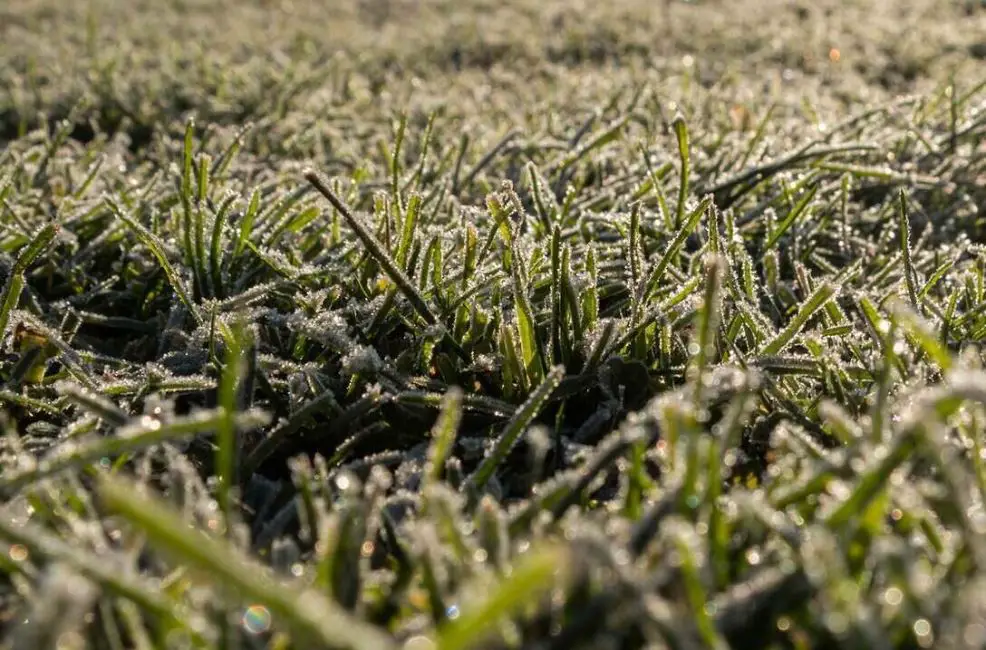If autumn is almost here, but you have not gotten around to planting the grass, you may be considering it now. Do grass seeds be killed by frost? This is the major question. Will grass seed withstand the impending freeze, in other words? The answer to this query will decide whether to risk probable grass seed freezing or wait until the spring to plant. Learn more about autumn grass sowing and how to keep fresh grass from freezing by reading on.

Can you Plant Grass Seeds in the Fall?
Yes, you can plant grass seeds in the Fall, although it becomes more difficult. In the beginning, it depends on the kind of grass seed you are planting. You will sow warm or cold grass, depending on the season. Although cold-season grasses like ryegrass do so more quickly, enabling them to reach maturity soon enough to tolerate winter weather, warm-season grasses like Kentucky bluegrass, or rough bluegrass take longer to germinate and develop enough to resist frost.
Avoid planting after the end of September, as a general rule. To reduce erosion, it is preferable to try to achieve some germination in the case of the new building rather than none at all.
There is greater latitude when overseeding onto grass that already exists. If October’s temperatures are still moderate, you could still have time for the seed to sprout before winter. Maybe.
Dormant seeding is the other choice.
What is Dormant Seeding?
Every kind of turf grass may experience dormant seeding. You plant when it is too cold for the seed to germinate before winter. This may be a little difficult. If seeds sprout before winter, they will probably perish since they are not fully developed.
Choose a period when the soil is pliable enough to be worked into, and the air temperature is low enough that seeds will not germinate by keeping an eye on the weather forecast. The soil should be kept at or below the low 40s F (below 7 C), and daytime temperatures should be regularly below 50 F (below 10 C). The intention is for the seed to remain dormant throughout the winter and then sprout as soon as the weather warms up in the spring.
Dormant Seeding Tips
In addition to monitoring the temperature, spread the seed on a prepared bed faster than usual to guarantee the success of dormant seeding. If a slice seeder is possible, use it to make soil furrows allowing seeds to directly touch the soil.
Avoid dark colors when applying mulch since they warm the soil and promote early germination. Use straw netting or loose straw instead to help retain the soil together.
Fresh Grass Freeze Alert
The risk arises if the freshly seeded grass seed germinates too rapidly before the onset of cold conditions. The immature, delicate shoots will not be established enough to withstand the challenging circumstances.
If your grass is growing and winter is on the way, you may wonder how to preserve it.
Some homeowners may be concerned when they see their grass turning brown in the winter, but grass never actually stops growing, not even then. It just undergoes hibernation or significantly slower growth. Nevertheless, the lawn might sustain long-term harm if the temperature falls below 20 F (-7 C).
Nonetheless, you may take certain precautions to avoid any winter injuries. Ice crystals found between the cells of frozen grass blades assist in shielding them from damage. You risk destroying the grass if you step on them, drive on them, or allow the dog and kids to run wild. If this occurs, the ice crystals puncture the cells, leaving brown and ugly grass to come spring.
Only fertilize in the spring and autumn, never in the winter.
Give the grass some time in the spring. Dead grass is not always indicated by brown grass. Also, hold off on cutting the grass until it is at least 2 inches (5 cm) long. To ensure that the grass may continue to photosynthesize and flourish, be sure you just cut it down by about a third.


